T. Thang Vo-Doan
Cyborg Beetle Achieves Efficient Autonomous Navigation Using Feedback Control
May 05, 2022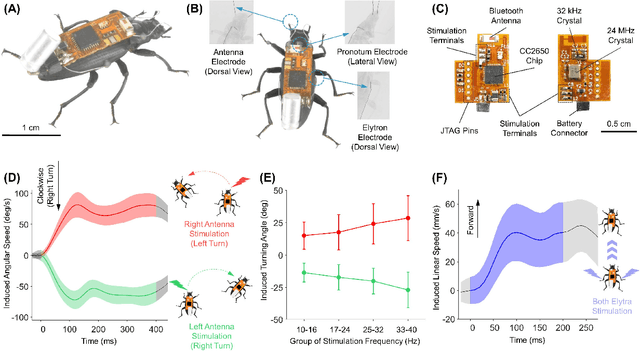
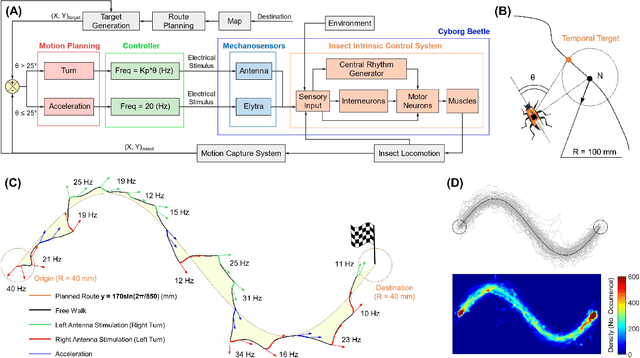
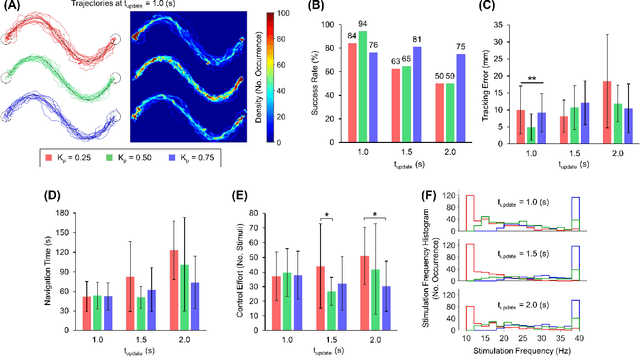
Abstract:Terrestrial cyborg insects were long discussed as potential complements for insect-scale mobile robots. These cyborgs inherit the insects' outstanding locomotory skills, orchestrated by a sophisticated central nervous system and various sensory organs, favoring their maneuvers in complex terrains. However, the autonomous navigation of these cyborgs was not yet comprehensively studied. The struggle to select optimal stimuli for individual insects hinders reliable and accurate navigations. This study overcomes this problem and provides a detailed look at the terrestrial navigation of cyborg insects (darkling beetle) by implementing a feedback control system. Via a thrust controller for acceleration and a proportional controller for turning, the system regulates the stimulation parameters depending on the beetle's instantaneous status. Adjusting the system's control parameters allows reliable and precise path-following navigations (i.e., up to ~94% success rate, ~1/2 body length accuracy). Also, the system's performance can be tuned, providing flexibility to navigation applications of terrestrial cyborg insects.
A robotics leg inspired from an insect leg
Mar 21, 2022
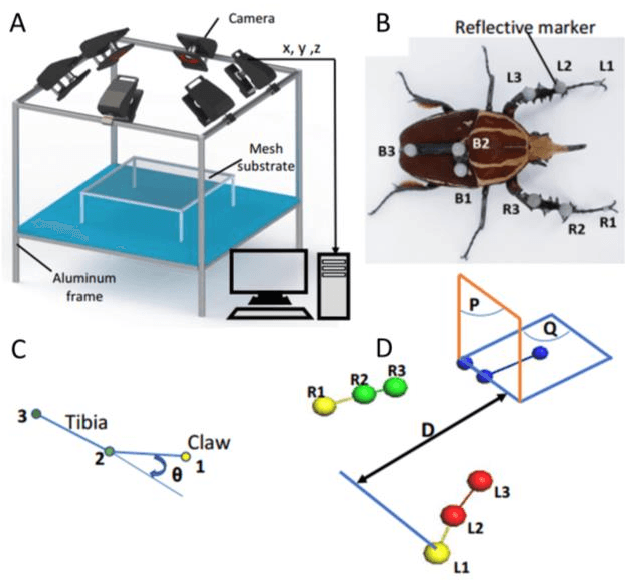
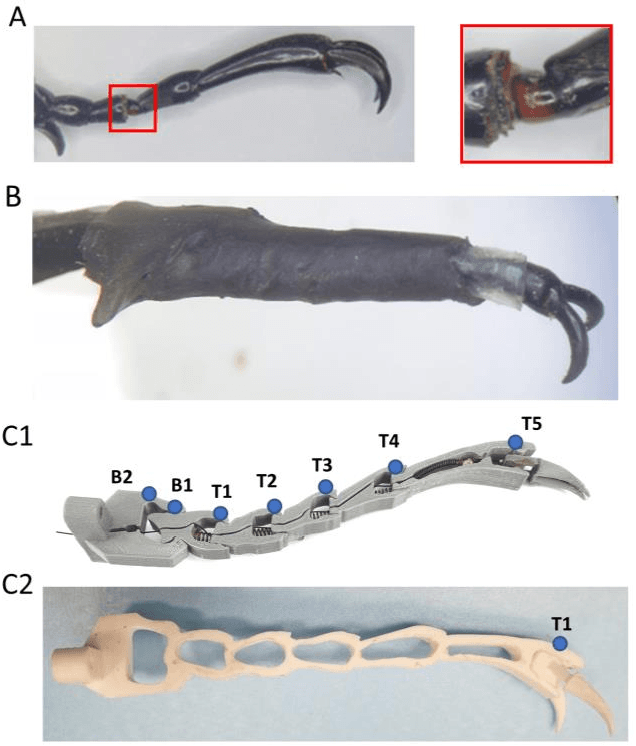
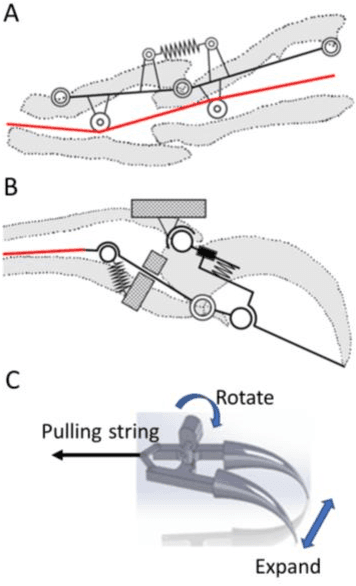
Abstract:Legged robots can operate in complex terrains that are unreachable for most wheeled robots. While insect legs contact the ground with the tarsal segments and pretarsus, most insect-inspired robots come with a simple tarsus such as a hemispherical foot tip. Insects, like the M. Torquata beetle, use the claws as their attachment devices on rough surfaces. Their sharp claws can smoothly attach and detach on plant surfaces by actuating one muscle. Thus, legged robots can mimic tarsal structures to improve their locomotion on inclined and rough surfaces. We conducted two types of experiments to test the hypothesis that the tarsal flexibility and rigidity play a role in the beetle's smooth walking. By cutting the membrane between the tarsomeres, we disabled the tarsus' rigid ability, so the claws cannot securely hook onto the walking surface. Conversely, after eliminating the tarsal flexibility, the beetle struggled to draw the claws out of the substrate. The results confirm the significance of the tarsus' properties on beetle walking. Then, we designed a cable-driven 3D printed tarsus structure to validate the function of the tarsus via a robotic leg. The tarsal configuration allows the prototype to hook onto and detach smoothly from the walking surface.
Braking and Body Angles Control of an Insect-Computer Hybrid Robot by Electrical Stimulation of Beetle Flight Muscle in Free Flight
Nov 29, 2021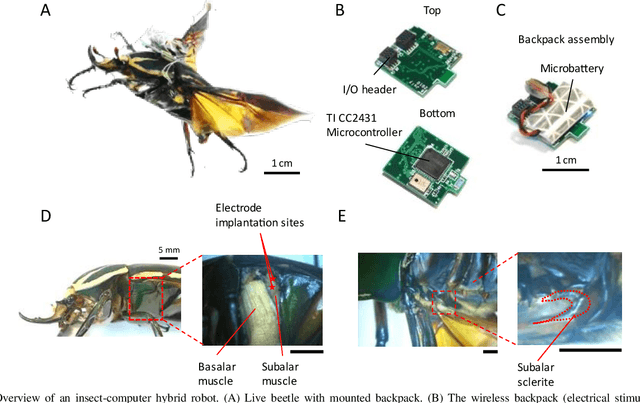
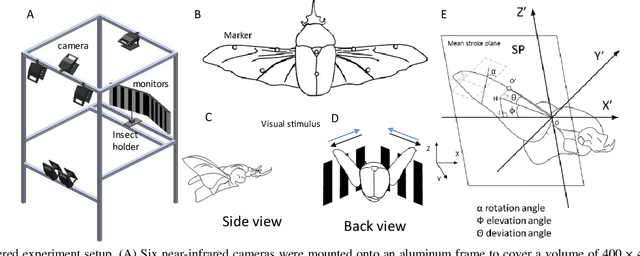
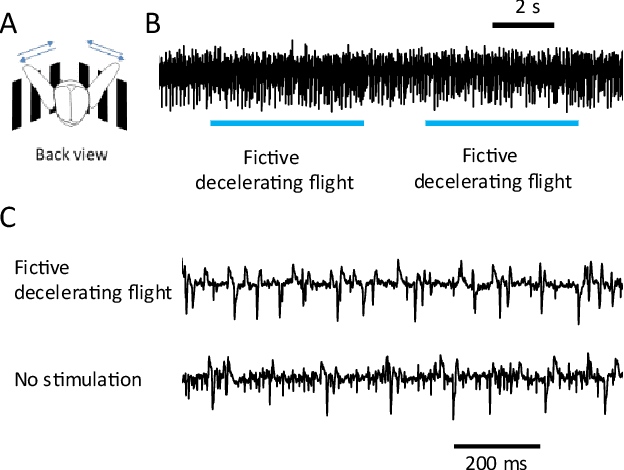
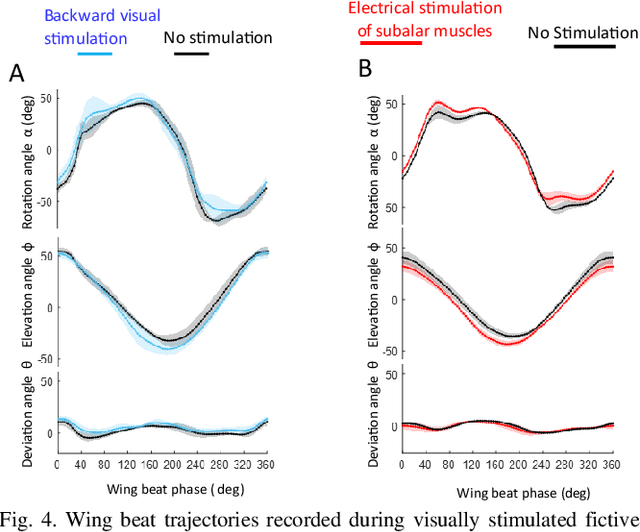
Abstract:While engineers put lots of effort, resources, and time in building insect scale micro aerial vehicles (MAVs) that fly like insects, insects themselves are the real masters of flight. What if we would use living insect as platform for MAV instead? Here, we reported a flight control via electrical stimulation of a flight muscle of an insect-computer hybrid robot, which is the interface of a mountable wireless backpack controller and a living beetle. The beetle uses indirect flight muscles to drive wing flapping and three major direct flight muscles (basalar, subalar and third axilliary (3Ax) muscles) to control the kinematics of the wings for flight maneuver. While turning control was already achieved by stimulating basalar and 3Ax muscles, electrical stimulation of subalar muscles resulted in braking and elevation control in flight. We also demonstrated around 20 degrees of contralateral yaw and roll by stimulating individual subalar muscle. Stimulating both subalar muscles lead to an increase of 20 degrees in pitch and decelerate the flight by 1.5 m/s2 as well as an induce an elevation of 2 m/s2.
Insect-Computer Hybrid System for Autonomous Search and Rescue Mission
Jun 04, 2021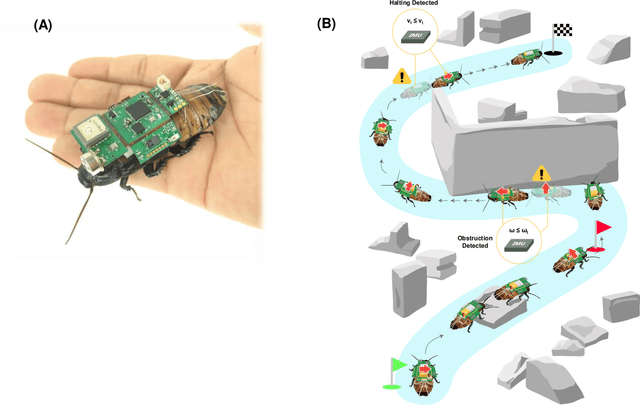
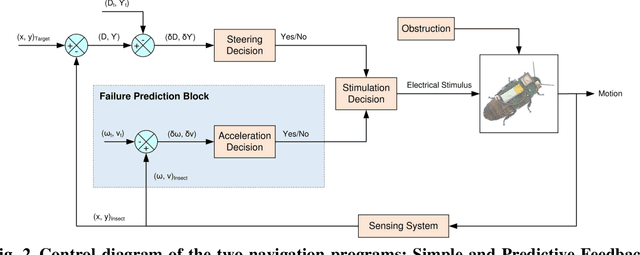
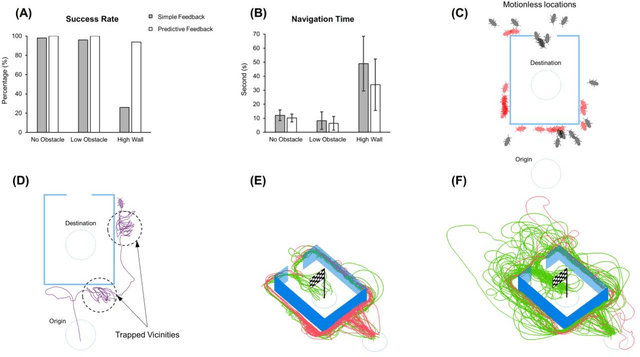
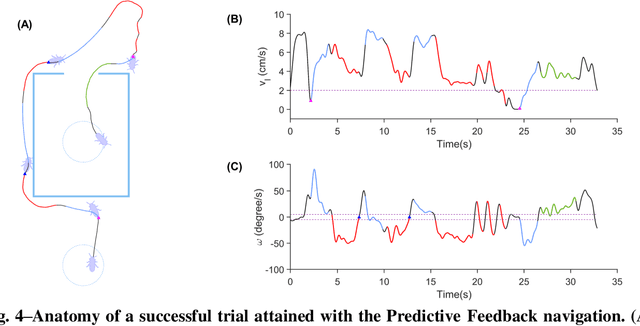
Abstract:There is still a long way to go before artificial mini robots are really used for search and rescue missions in disaster-hit areas due to hindrance in power consumption, computation load of the locomotion, and obstacle-avoidance system. Insect-computer hybrid system, which is the fusion of living insect platform and microcontroller, emerges as an alternative solution. This study demonstrates the first-ever insect-computer hybrid system conceived for search and rescue missions, which is capable of autonomous navigation and human presence detection in an unstructured environment. Customized navigation control algorithm utilizing the insect's intrinsic navigation capability achieved exploration and negotiation of complex terrains. On-board high-accuracy human presence detection using infrared camera was achieved with a custom machine learning model. Low power consumption suggests system suitability for hour-long operations and its potential for realization in real-life missions.
 Add to Chrome
Add to Chrome Add to Firefox
Add to Firefox Add to Edge
Add to Edge